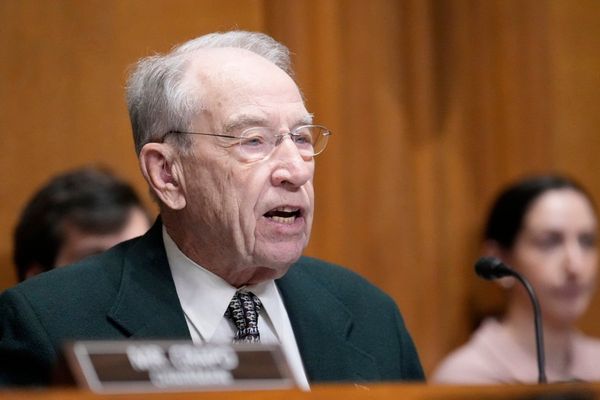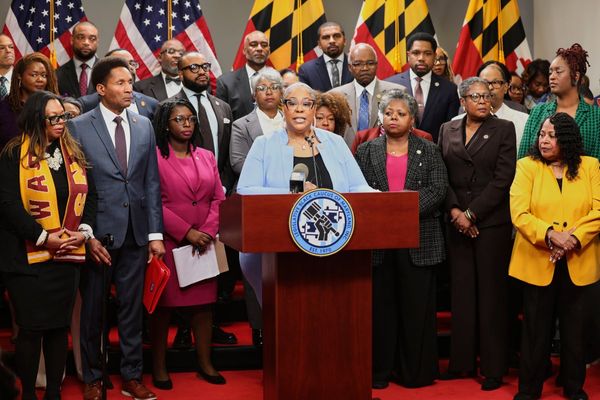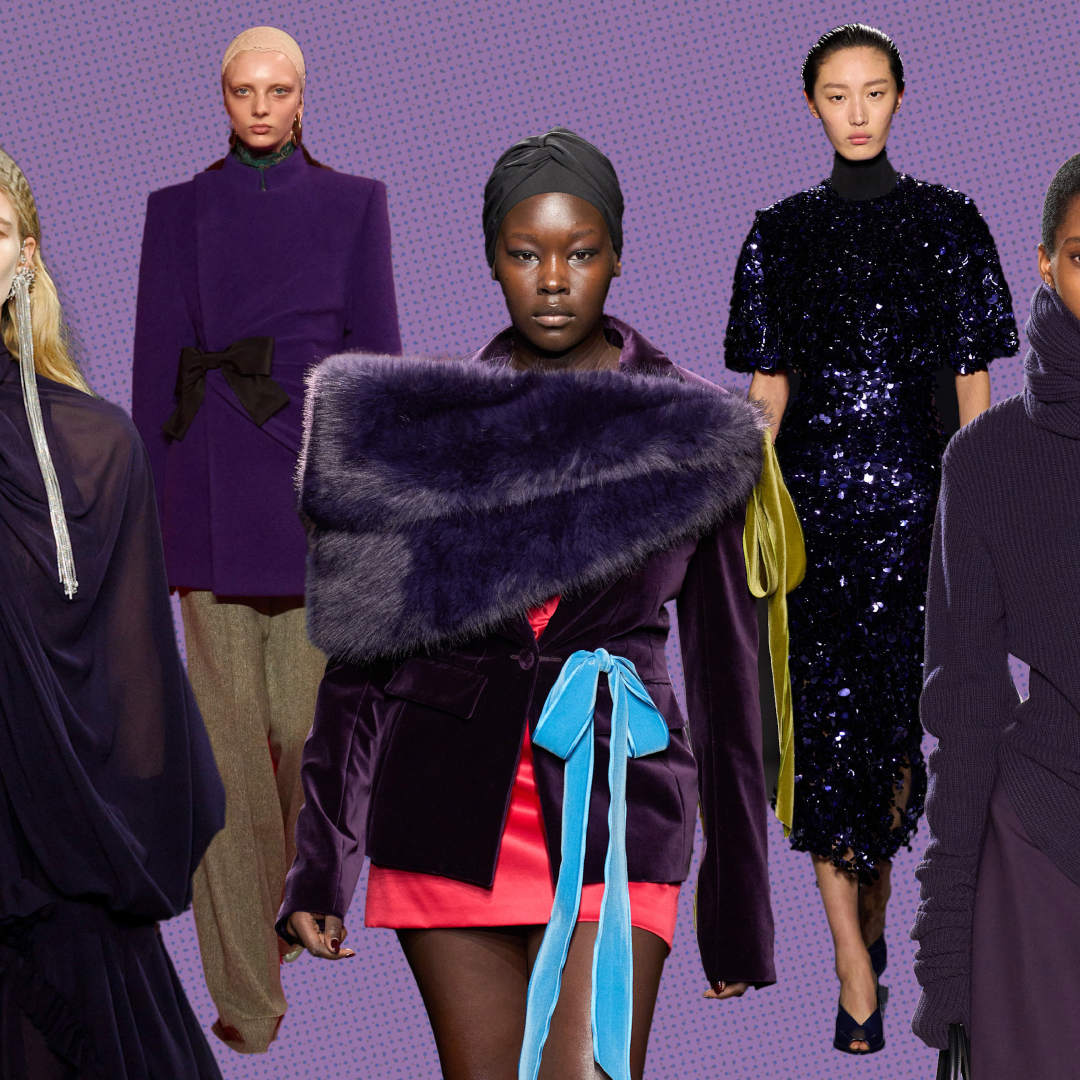
Every color trend has an underlying message if you know where to look, but none shouts “bow down” quite like purple. If it needed a tagline, it would be “Let them eat cake”—that famously controversial phrase attributed to Marie Antoinette, now shorthand for aristocratic irreverence. Historically, purple’s ties to nobility date back to ancient times, when the dye was prohibitively rare and expensive, instantly calling to mind coronation crowns and ermine-trimmed velvet robes.
The rich, regal purples showcased during the recent Fashion Month made one thing clear: “Eat the rich” is out, and aspirational opulence is in (at least on the runways). The sentiment was anything but subtle—think silks, satins, sequins, and furs that Elizabethan nobles would have worn, perhaps a siren song for wealth and prestige firmly linked to an elite luxury market and the shoppers with budgets for the new-season designer.
While crowns may be old hat, purple is finding fresh, modern expressions in the new millennium. In McQueen's Fall 2025 show, the color manifested as plump plum bomber jackets and eggplant evening gowns suited for upper-echelon galas. At Valentino and Nina Ricci, rich violet velvet smoking jackets called back to imperial robes (Ricci's even came with a matching fur stole). Meanwhile, at Altuzarra, a sheer and sumptuous naked dress looked tailor-made for someone who Ubers everywhere—let’s be honest, a frilly, entirely see-through gown isn’t exactly public-transit-friendly.
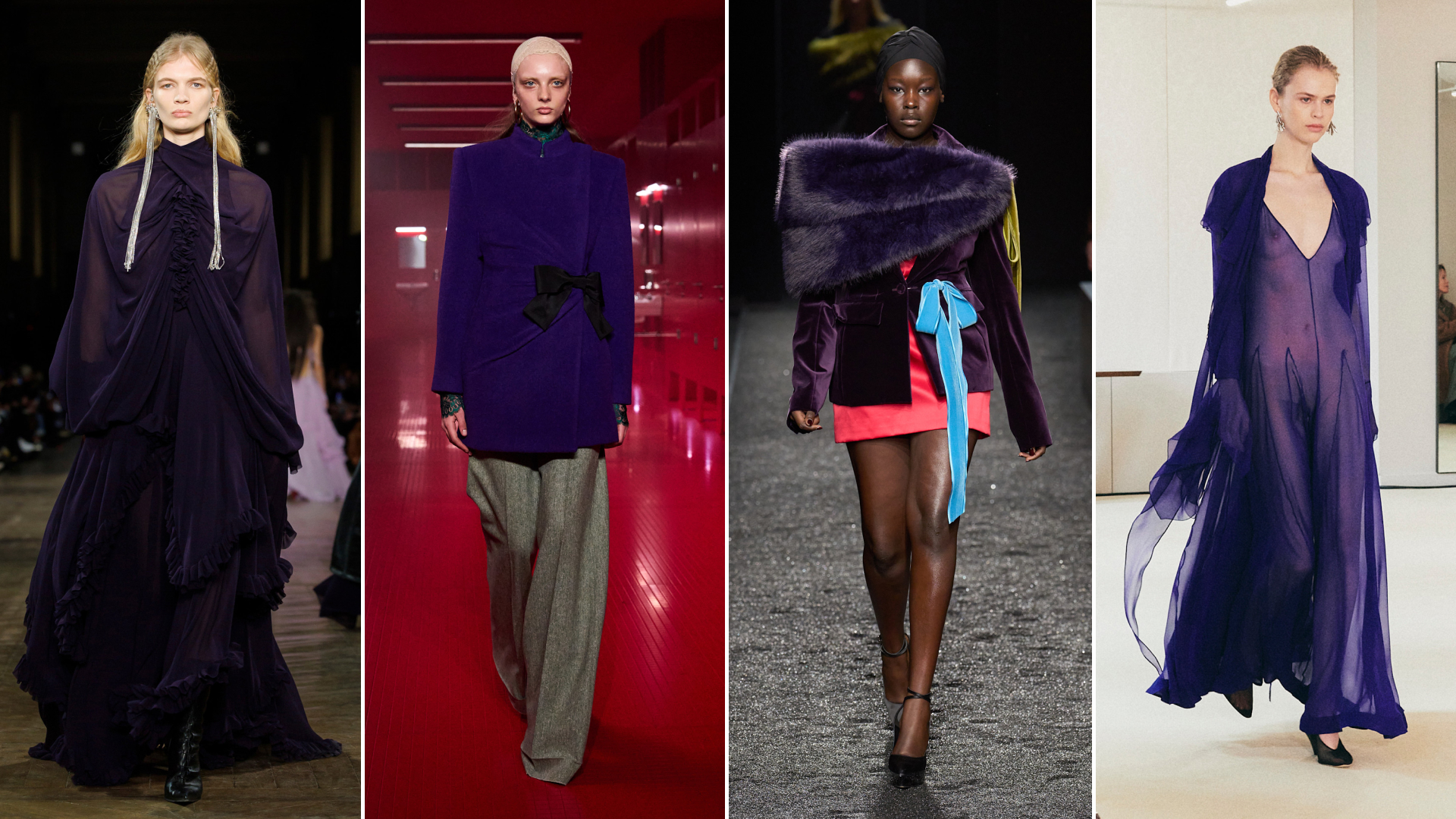
This purple trend isn’t the kind of demure lilac or midnight shade that might pass for blue in low light—it’s deliberately in-your-face. “What we’re seeing on the runways right now is a very industrial, plastic purple,” says Faran Krentcil, a BBC fashion columnist and New School fashion media professor. “It’s not the color of grapes; it’s the color of grape Skittles.”
You’re meant to salivate over Miu Miu’s belt-buckle boots and cashmere sweaters in confectionary violet. “I started craving Grape Gatorade at Gucci,” Krentcil recalls, referring to the Italian fashion house’s crisp outerwear and deep-purple duffel bags. “When your other senses start getting psyched, that’s an indication of something bigger than just ‘Oh, that’s a cool coat.’”
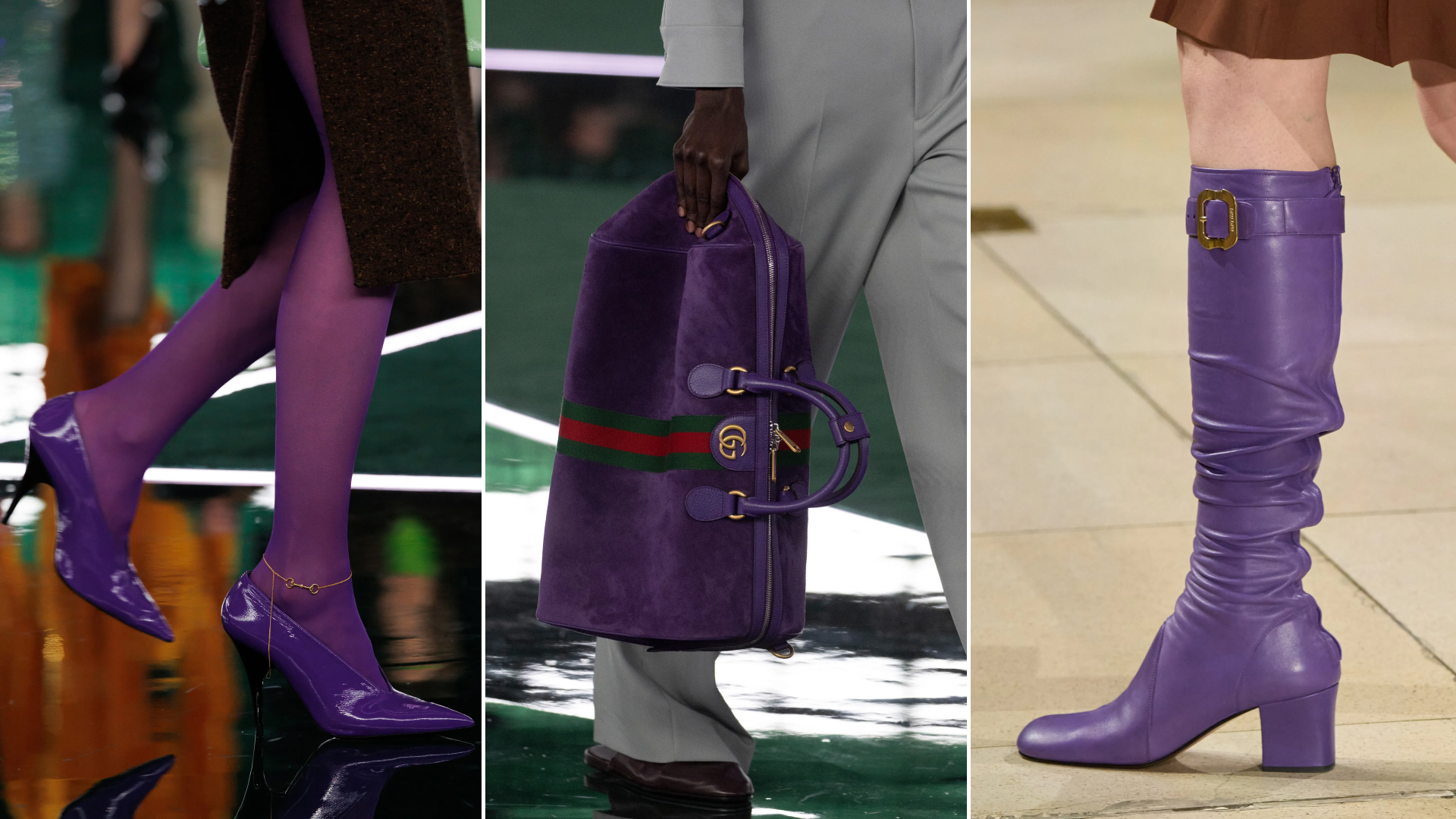
Fashion’s pivot toward louder, prouder luxury—relatability be damned—makes it no shocker that royal purple is ruling the color charts in 2025. Historically, purple has always played in the big-money leagues: in the Byzantine era, it was as prized as gold and strictly reserved for the VIP set. One particularly fancy version, Tyrian purple, came from extracting secretions from tens of thousands of sea snails, so only the truly elite could afford even a swatch.
Fast-forward to the 16th century, when Queen Elizabeth took purple’s exclusivity to the next level, actually banning non-royals from wearing it. “That made purple a fully sanctioned symbol of royalty and power,” explains Kristin Contino, Marie Claire’s senior royal and celebrity editor. “Even though modern production means anyone can wear it today, the color’s luxurious association still sticks.”
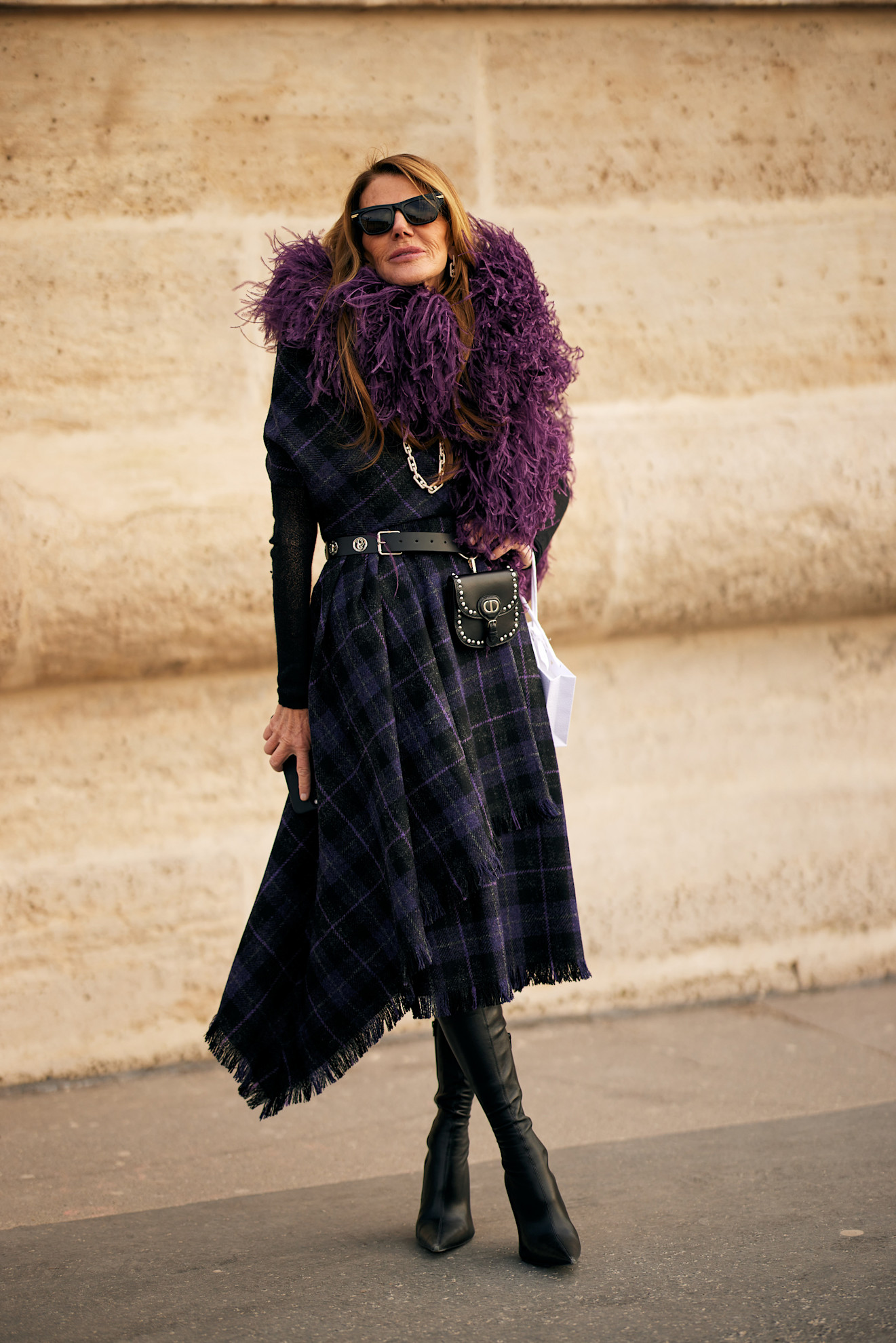
Contrary to its rich facade, the fashion industry’s embrace of purple may also reflect tighter budgets across the sector as money is very much on people's minds in 2025. Since early March, Google searches for "recession" have soared by 356 percent, tariff plans are being implemented, and the stock market is on a roller coaster. “There’s a lot of leftover red dye from the pop-of-red and cherry core trend,” explains Krentcil. “Factories have stockpiles they need to use. Working with what’s already available is essential, especially now that major luxury brands are committing to more sustainable production.”
When it comes to consumers, a color associated with wealth is both aspirational and comforting, even if its soothing effects are merely subliminal. If treating yourself to a purple purse makes you feel like royalty for a day, then long live the trend. And while it may not boost your bank account balance, you'll certainly look like it did.



